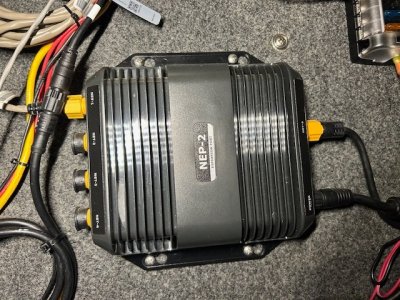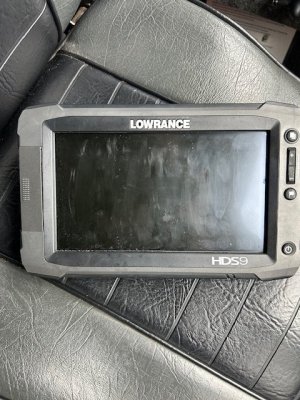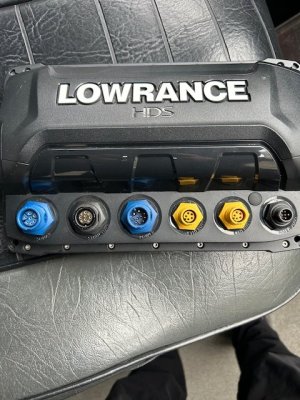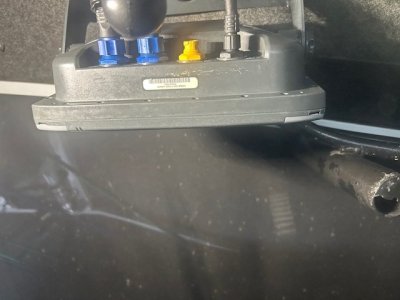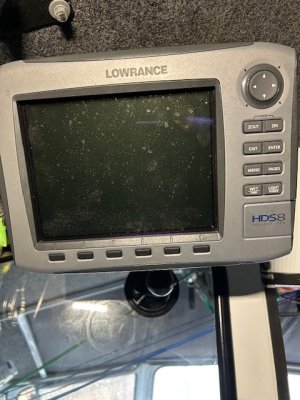craigbroening
Member
Hi Guys, wanted to raise some questions after doing some research on the topic without finding the answers I'm after. I'll provide details on what I have installed and then ask the questions.
Vessel is a Thunderjet Alexis Ocean Pro, 22 ft, 225 single suzuki engine.
I currently have installed on the forward sounder a Lowrance HDS 9 Gen 2 Touch. It has a 7 pin Navico/Lowrance Sonar that is just the stock transom transducer. It is attached to a NMEA 2k network where I have point 1, Suzuki engine interface, garmin reactor 40 kicker all within this network. This gives me engine data, fuel data, compass bearings for the reactor and the mfd.
The aft sounder is a Lowrance older HDS 8. It also has a 7 pin Lowrance/Navico 7 pin sonar with a stock transom transducer. It is attached to a secondary and seperate NMEA 2k network that is attached to only a lowrance/navico fuel flow sensor. I installed this to compare fuel flow data but is not in the nature of these questions.
I am wanting to install new transducers and also realize that I should probably upgrade at least one set of these MFDs. This year i'd like to get the Airmar p66 and put on the aft sounder. I want to do this because I'm on the fishing deck looking at that sounder more often than the forward sounder. Next year ill upgrade the forward MFD and put that MFD aft. With it Im thinking of adding the 165hw from airmar.
Question is will this older sounder run the p66? Does this make sense? Also if I combine the NMEA 2k networks will they both show the data from the p66?
Another question raised during my research is, It sounds like you shouldn't be running your transducer dry as it generates too much heat not not being in the water. How do you guys go about playing with settings and such or doing setup when your boat is out of water? Just disconnect it?
Pictures are of the units that are currently installed
Vessel is a Thunderjet Alexis Ocean Pro, 22 ft, 225 single suzuki engine.
I currently have installed on the forward sounder a Lowrance HDS 9 Gen 2 Touch. It has a 7 pin Navico/Lowrance Sonar that is just the stock transom transducer. It is attached to a NMEA 2k network where I have point 1, Suzuki engine interface, garmin reactor 40 kicker all within this network. This gives me engine data, fuel data, compass bearings for the reactor and the mfd.
The aft sounder is a Lowrance older HDS 8. It also has a 7 pin Lowrance/Navico 7 pin sonar with a stock transom transducer. It is attached to a secondary and seperate NMEA 2k network that is attached to only a lowrance/navico fuel flow sensor. I installed this to compare fuel flow data but is not in the nature of these questions.
I am wanting to install new transducers and also realize that I should probably upgrade at least one set of these MFDs. This year i'd like to get the Airmar p66 and put on the aft sounder. I want to do this because I'm on the fishing deck looking at that sounder more often than the forward sounder. Next year ill upgrade the forward MFD and put that MFD aft. With it Im thinking of adding the 165hw from airmar.
Question is will this older sounder run the p66? Does this make sense? Also if I combine the NMEA 2k networks will they both show the data from the p66?
Another question raised during my research is, It sounds like you shouldn't be running your transducer dry as it generates too much heat not not being in the water. How do you guys go about playing with settings and such or doing setup when your boat is out of water? Just disconnect it?
Pictures are of the units that are currently installed

